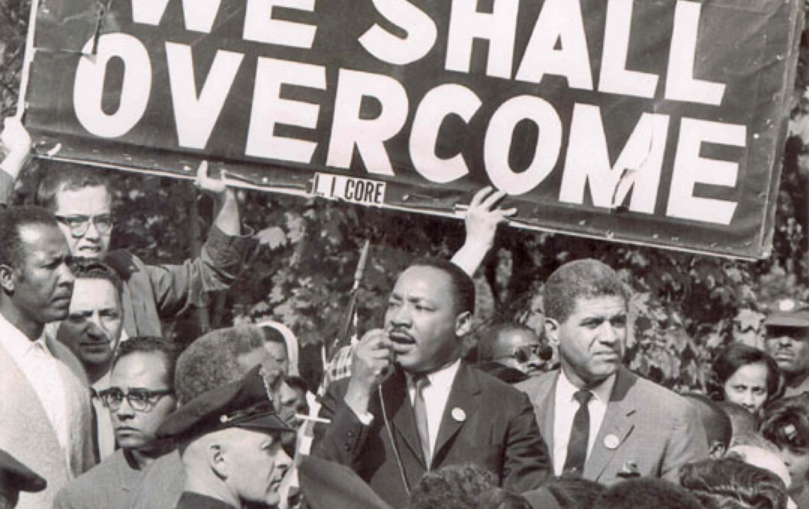Table of Contents
BROWN, BLACK, WHITE
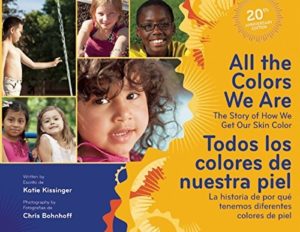 |
Katie Kissinger’s All the Colors We Are (Redleaf Press, 2014) is a simple scientific explanation of skin color for ages 3-7. Bonus: it’s bilingual (English/Spanish.) |
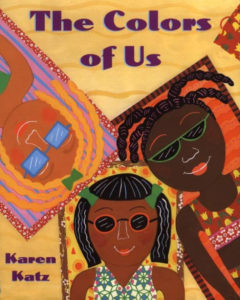 |
In Karen Katz’s The Colors of Us (Square Fish, 2002), seven-year-old Lena wants to paint a self-portrait – but what color is her skin? Cinnamon? Peanut butter? A walk through her neighborhood turns up many shades of brown. For ages 4-8.
|
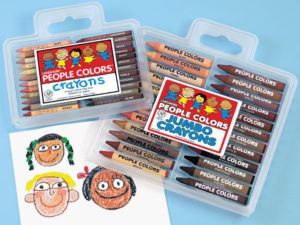 |
Crayons now come in the many colors of people. From Lakeshore Learning, People Colors, for example, is a collection of 24, from ivory to ebony, with lots of pinks, tans, and browns in between; and Crayola’s Multicultural Crayons, a set of eight, includes apricot, black, burnt sienna, mahogany, peach, and more. |
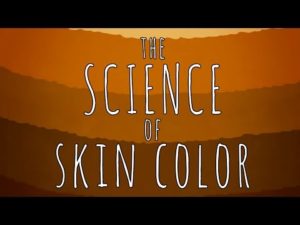 |
From TED-Ed, see The Science of Skin Color.
|
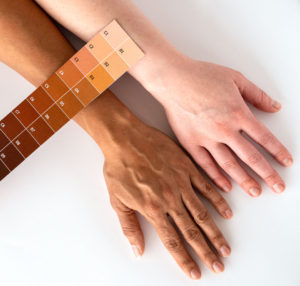 |
From the Smithsonian Museum of Natural History, see Modern Human Diversity: Skin Color.
|
 |
From Discover Magazine, Why Did Darker and Lighter Skin Colors Evolve?
|
SLAVERY
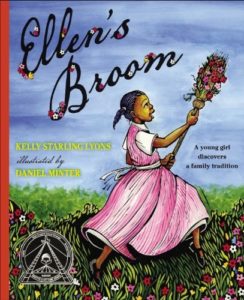 |
Slave marriages weren’t legal – and many enslaved couples could only pledge themselves to each other until “death, distance, or the white man” tore them apart. By Kelly Starling Lyons, Ellen’s Broom (G.P. Putnam’s Sons, 2012) is set just after the Civil War, when ex-slaves at last could legally register their marriages. As Ellen’s family heads for the courthouse, Ellen brings along the broom that hung over the family fireplace – that her slave parents jumped many years ago, in an old tradition of slave marriage. For ages 5-8. |
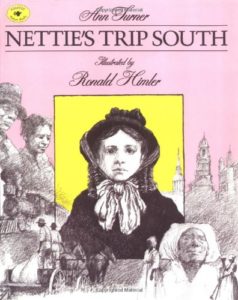 |
Ann Turner’s Nettie’s Trip South (Aladdin, 1995), written in the form of letters to a friend, is a view of slavery as seen by a little girl visiting the South just before the Civil War. Based on the diary of the author’s great-grandmother. For ages 6-9.
|
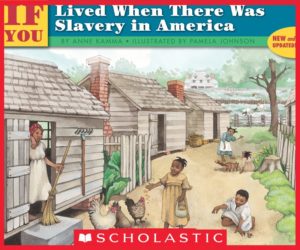 |
Anne Kamma’s If You Lived When There Was Slavery in America (Scholastic, 2004) is written in a discussion-promoting question-and-answer format. Where did slaves come from? What was it like to be a slave? What kind of cabin would you live in? For ages 6-10.
|
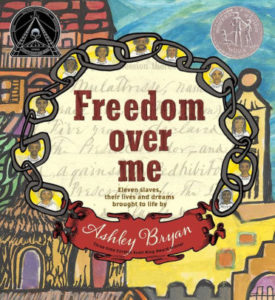 |
Ashley Bryan’s Freedom Over Me (Atheneum/Caitlyn Dlouhy Books, 2016), based on original estate appraisal and auction documents, uses narrative poetry to create portraits of eleven slaves belonging to the Fairchild family. A wonderful and compelling book for ages 8-12.
|
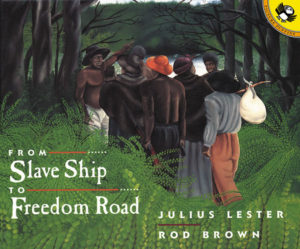 |
Julius Lester’s From Slave Ship to Freedom Road (Puffin, 1999) is an illustrated and painfully accurate account of slavery and its aftermath. “They took the sick and the dead and dropped them into the sea like empty wine barrels. But wine barrels did not have beating hearts, crying eyes, and screaming mouths.” For ages 8-12. |
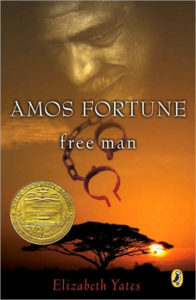 |
Elizabeth Yate’s Amos Fortune, Free Man (Puffin, 1989), a Newbery Medal winner, is the story of Amos Fortune, kidnapped and sold into slavery at the age of fifteen, who spends the rest of his life determined to win his freedom. After decades, at last he does. For ages 8-12.
|
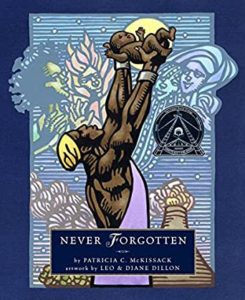 |
Patricia C. McKissack’s gorgeously illustrated Never Forgotten (Schwartz & Wade. 2011) is a story told in poems of an African blacksmith, Dinga, who raises his much-loved young son, Mustafa, on his own after the death of his wife. When Mustafa is kidnapped and sold into slavery, Dinga calls on the Elements – Earth, Fire, Water, and Wind – for help. Through them, he learns of his son’s passage to America and his life as a blacksmith in South Carolina. Few books deal with the pain of the families in Africa who lost their loved ones. A beautiful and heartbreaking story for ages 9 and up. |
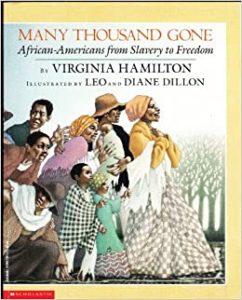 |
Virginia Hamilton’s Many Thousand Gone (Knopf, 1995) traces the history of slavery in America through the voices and stories of the people who lived through it – among them an African prince who was sold into slavery, the mother whose escape over an icy river inspired Eliza’s famous scene in Uncle Tom’s Cabin, and Tice Davids, supposedly the first slave to reach freedom by traveling north on the “underground road.” For ages 9-14. |
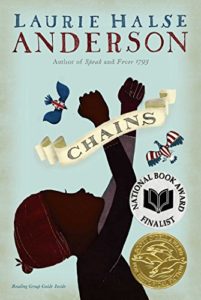 |
In Laurie Halse Anderson’s Chains (Atheneum, 2010), set during the Revolutionary War, Isabel and her little sister Ruth have been promised their freedom upon the death of their mistress. Instead, they become the property of the abusive Locktons, a Loyalist couple from New York City. There Isabel becomes friends with Curzon, a slave boy helping the American rebels, and agrees to act as a spy. This is the first of the Seeds of America trilogy; sequels are Forge and Ashes. For ages 10 and up. |
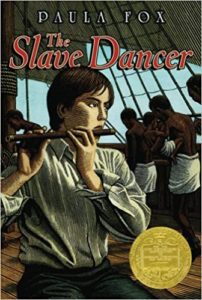 |
In Paula Fox’s The Slave Dancer (Aladdin, 2008), young Jessie Bollier is kidnapped and taken to a slave ship, where his job is to play the fife while the captive Africans are forced to dance to keep their muscles strong. Jessie is horrified by what he sees – and the voyage ends even more horrifically, when the ship sinks following a storm. Jessie and a slave boy manage to survive by clinging to a mast, and eventually reach Mississippi, where they are rescued by an escaped slave. An intense and gripping read for ages 11 and up. |
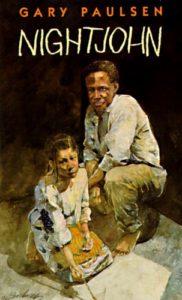 |
In Gary Paulsen’s Nightjohn (Laurel Leaf, 1995), the title character is an escaped slave who has returned to the South and comes by night to teach slaves to read – and is willing to risk his own life to do so. The story is told through the eyes of a young slave girl, Sarny, who is determined, in the face of threats and brutality, to learn. For ages 12 and up.
|
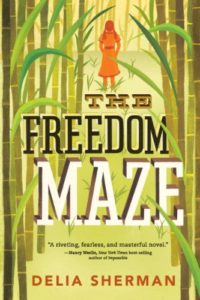 |
In Delia Sherman’s time-travel fantasy The Freedom Maze (Candlewick, 2014), 13-year-old Sophie is spending the summer at her grandmother’s old house in the Louisiana bayou – from which she’s transported back to the year 1860, where she finds herself enslaved on a sugar plantation by her own ancestors. An exploration of racial relationships then and now, for ages 12 and up. |
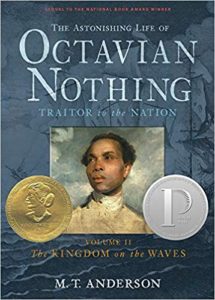 |
M.T. Anderson’s The Astonishing Life of Octavian Nothing: The Pox Party (Candlewick, 2008), set in Revolutionary Boston, is the story of Octavian, a young black boy being raised by a group of rational philosophers who study his every move. It’s a life of eerie luxury – until Octavian discovers that he and his mother are slaves, subjects of an experiment aimed at discovering whether or not Africans are inferior to Europeans. After the death of his mother following a “pox party,” Octavian escapes and becomes a soldier in the Patriot army – only to find that liberty isn’t in the cards for slaves. A complex and thought-provoking book. Winner of a National Book Award. For ages 12 and up. Also see the sequel: The Astonishing Life of Octavian Nothing: Traitor to the Nation. |
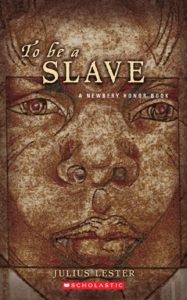 |
Julius Lester’s powerful To Be a Slave (Puffin, 2000) incorporates the words of the people who went through it, interspersed with historical commentary. An important and highly recommended read for ages 12 and up.
|
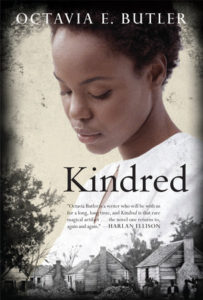 |
In Octavia E. Butler’s Kindred (Beacon Press, 2003), Dana, a modern African-American woman, is abruptly torn away from her white husband and ends up in the antebellum South, where she saves Rufus, the young son of the plantation owner, from drowning. Dana’s connection to Rufus persists over time, with her stays in the past becoming ever longer and more difficult and dangerous. A fascinating story of racism, sexism, and white supremacy that shows how badly it damages all concerned. A powerful read for teens and adults. |
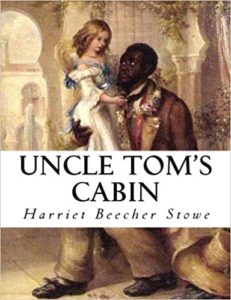 |
Harriet Beecher Stowe’s Uncle Tom’s Cabin, originally published in 1852, was the second-best-selling book of the 19th century, narrowly outdistanced by the Bible. A passionate anti-slavery novel, featuring the saintly slave Uncle Tom and the evil white overseer, Simon Legree, the book fueled and inspired the abolitionist movement. Supposedly Lincoln, upon meeting Stowe, remarked “So you are the little woman who wrote the book that started this great war.” Available in many editions. |
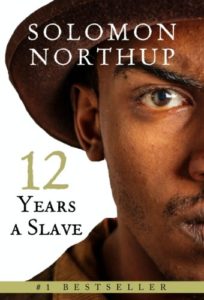 |
The movie Twelve Years a Slave (2013) is based on the memoirs of Solomon Northup, a free black man from New York, who was kidnapped and sold into slavery in Louisiana. Many awards. Rated R for violence, nudity, and some sex scenes – generally recommended for ages 16 and up.
|
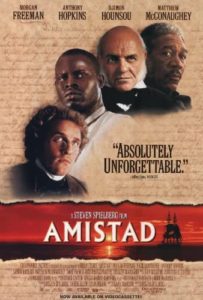 |
Amistad (1997), directed by Steven Spielberg, is the name of a slave ship, traveling to Cuba in 1839, which was taken over by its cargo of kidnapped Africans. They hoped to return to Africa – but instead ended up in the United States. There their case, passionately defended by John Quincy Adams, came before the Supreme Court. Rated R for nudity, violence, and intense emotional scenes. |
